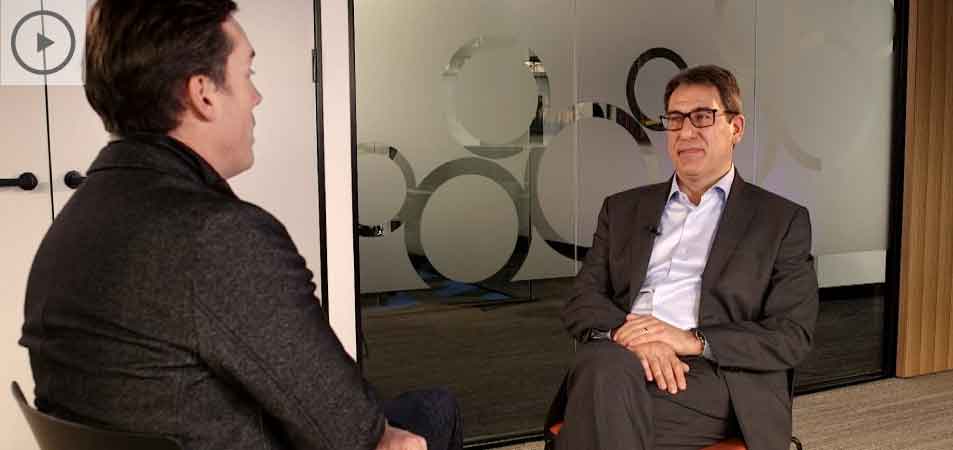Today no licensor is searching for ‘distributors only’. Rather, we seek partners able to provide a full service and take a drug from late stage clinical development to market.
This means we need a partner with expertise in regulatory affairs, market access and all pre-launch activities including investigator management and KOL identification.
Once a product is launched, marketing and sales functions are of utmost importance, as is a reliable supply chain – because most of PharmaMar´s products are to be handled as ‘cold chain’. To this regard, the concept of ‘distributor only’ is a long time over.
For all functions, a partner needs the best talents. Once approved, an ideal partner should be able to execute a global brand strategy, and more importantly, make it fit to the special characteristics of the local market.
Results are important to us: a drug can only help patients if it gets sold and used to the benefit of patients.
You have now selected ST to commercialise more than one product. What does this say about ST?
We have licensed two products to STA – Aplidin for multiple myeloma as well as Zepsyre, which is in Phase 3 development for small cell lung cancer.
This is confirmation and recognition of the fact that we are very pleased with our partnership in Australia so far.
Aplidin was our first drug licensed to STA. We are delighted with the level of excellence in execution and speed at which this product has been introduced to market.
Australia is the first country in the world that has introduced an expanded access program (EAP) for Aplidin for multiple myeloma patients where there is an unmet need.”
In your experience, what have been the best things about working with ST? What has impressed you to date?
What our team in PharmaMar headquarters likes most is ST´s ‘hands-on’ attitude and the great communication. If issues appear in daily operations, we rely on ST to problem solve, rather than seek solutions from us.
This is valuable for a mid-cap biotech like ours which has limited resources. It builds trust.
Some pharma companies require a lot of assistance from their international partner. What has been the experience with ST?
It goes without saying that when it comes to new drug approval you need to get the buy-in of many stakeholders: doctors, health authorities, the TGA, payors, and of course, patients. ST had implemented a well thought-out program of activities, starting with face-to-face meetings and round table forums, through to an expanded special access program to prepare the market for launch.

Globally speaking, Australia, New Zealand and South East Asia is quite a small market. Why is it important to PharmaMar?
It is true that when it comes to spend in pharmaceuticals, the territory is only a few percent of the total world market. However, it still offers an important opportunity and also provides a great growth potential for the future.
The region licensed to ST is very diverse. On the one hand, you have countries like Australia, and to a lesser extent Singapore, which are very similar to the pharmaceutical markets of Europe, Canada or the United States.
Generally speaking, you will find health systems provide broad coverage and there is an increasing focus on affordable drug pricing and reimbursement for everybody.
It is our firm belief that in the future those developing countries in South-East Asia will have to work with us, the pharma industry, to make effective cancer medicines available for a broader group of patients.
On a commercial level, why do international companies like PharmaMar need to select a company that understands the particular needs of this region?
Europe and US-based biotech companies have to focus on Europe and the US first in order to succeed. Together these two markets represent around 70% of the world pharma market. Though culturally very close, Australia is geographically remote.
Given the size of the total territory and the market rewards today, we believe it is more cost efficient to partner with a local and regional specialist. If a specialist company, such as STA, does cover several countries and also provides the right expertise in those countries, this becomes a win-win for everybody.
What would you say now to other global biotechnology companies seeking a pharmaceutical partner to commercialise products in this region?
When it comes to high cost proprietary products for the institutional markets, ST is one of the first addresses to consider.
What is your expectation for the future of this partnership?
We hope to see successful launches of our frontrunners Aplidin and Zepsyre and a continuation of our trustful partnership with ST.
In addition, we look forward to working with ST to bring our products to those markets in South- East Asia which currently do not have access to innovative medicines.”
PharmaMar’s Heiner Pieper provided these insights in June 2018.




